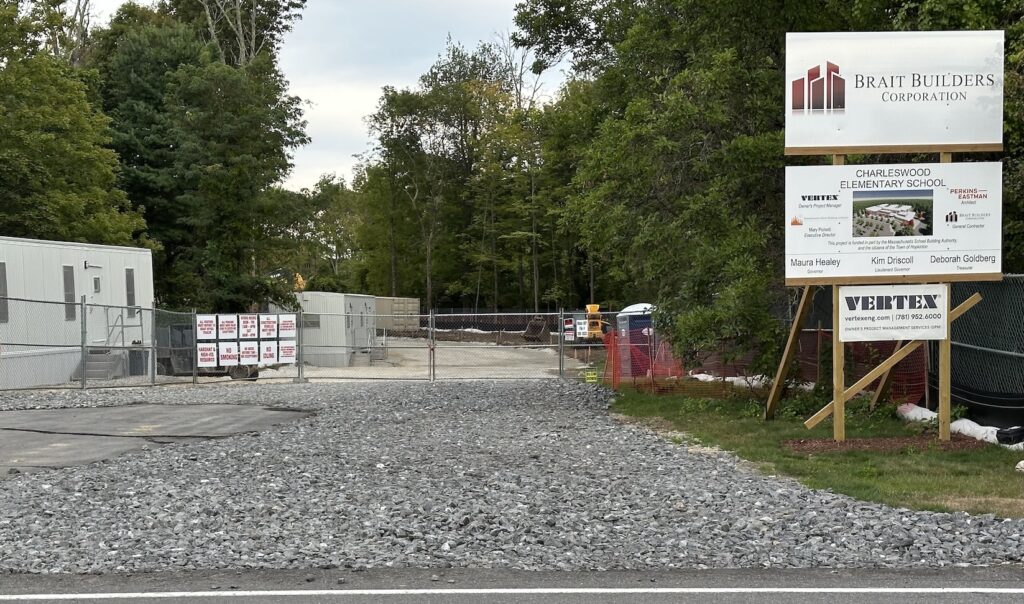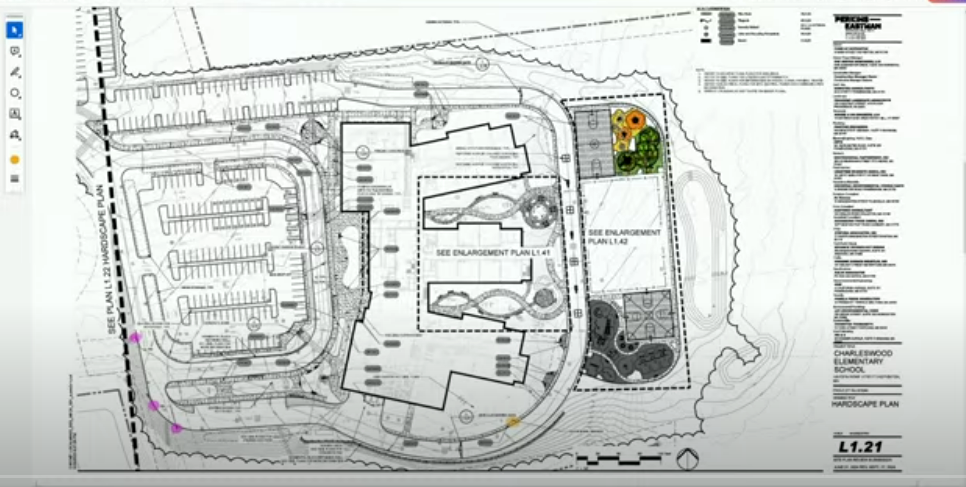About 20 people attended Tuesday’s forum for the Elementary School Building Committee, with a few neighbors of potential sites voicing concerns that existing traffic problems will get worse.
Before a question-and-answer period, Project Manager Jeff D’Amico explained the process with the Massachusetts School Building Authority (MSBA) so far and outlined key dates going forward. The Elementary School Building Committee (ESBC) will take a vote on selection of a site on Feb. 13 and submit its preferred schematic report to the state in March.
From there, the complete schematic would go to the state in August and before a Special Town Meeting with a funding request likely in November. If approved, D’Amico indicated construction would begin in 2025, with an anticipated midyear opening during the 2026-27 school year.
Robert Bell, principal of educational programming and planning at architectural firm Perkins Eastman, outlined the work that would be needed at other school buildings running parallel to the Elmwood School project.
If the new school is built for Grades 2-3, the addition of 108,000 gross square feet would be needed across the district. If the school has Grades 2-3-4, Bell said that number would drop to 68,000 gross square feet.
The cost for an Elmwood replacement would run $124 million-$127 million with two grades and $160 million-$164 million with three grades.
The overall estimated cost for all work in the district would be $295 million to $302 million for two grades and $280 million to $288 million for three grades, with 20-25 percent reimbursement from the MSBA factored in. Bell said the cost for three grades is $15 million less because MSBA would be contributing toward that extra grade.
D’Amico said Hopkins School would be the first of the other schools to move forward with additions and be completed in summer 2026, before Elmwood.
D’Amico said there would be more certainty on numbers before the August submission based on changing economic conditions and inflation.
The presentation also featured site and floor plan sketches on two sites: Elm Street and Hayden Rowe Street, depicting so-called “Bar,” “Village” and “Pinwheel” styles.
Bell noted a top cited priority was for energy and making the school net zero ready. He said a decision would have to be made about having a geothermal versus hybrid energy source, factors “integrated into our thinking and analysis.”
Resident Tina Berlad was among the residents expressing concern. A 30-year resident, Berlad said she has to plan her whole day around buses and cars going in and out of Hayden Rowe. “I feel bashed, whacked and placked,” she said of traffic in the area and the prospect of more.
She added that she respects all the numbers and statistics derived for the presentation, “But there is a human factor. It’s enough.”
Resident Bill Collins said Hayden Rowe was no place to build another school. He said the prospect of increasing traffic by several hundred vehicles was “horrible” and “incomprehensible.”
ESBC Chair John Graziano said the plan would be to have two entrances in order to relieve the queue and backup onto Hayden Rowe.
Resident Mary Arnaut said she gets stuck in traffic for at least 20 minutes because of drop-off and pickup times at the existing schools and has to plan her schedule accordingly. She said it is a small price to pay for a good school system, but she feels sorry for people trying to go north and south on Route 85.
Arnaut said she would rather see a Grades 2-5 school built with extra space because it seems like school projects end up needing additions soon after they are finished.
“Hopkinton is very popular and it’s going to grow,” she said. “Let’s make [the school] as large as we can,” Arnaut said. She encouraged the board to “spend upfront to accommodate future needs.”
The MSBA would not allow for four grades at the building, Graziano said, but there is the possibility of 10 percent expansion to all the buildings. However, Graziano, who worked on the Marathon School project that required additions afterwards, said that situation occurred because of the formula the MSBA was using at the time.
With the Elmwood project, the formula is “refreshed” to allow for growth, and Graziano said the committee is optimistic the school would be able to accommodate “what we see and what we expect to see so we don’t have to expand.”
The next ESBC meeting is Tuesday, Jan. 31, at 6 p.m. at the HCAM studios.



















0 Comments